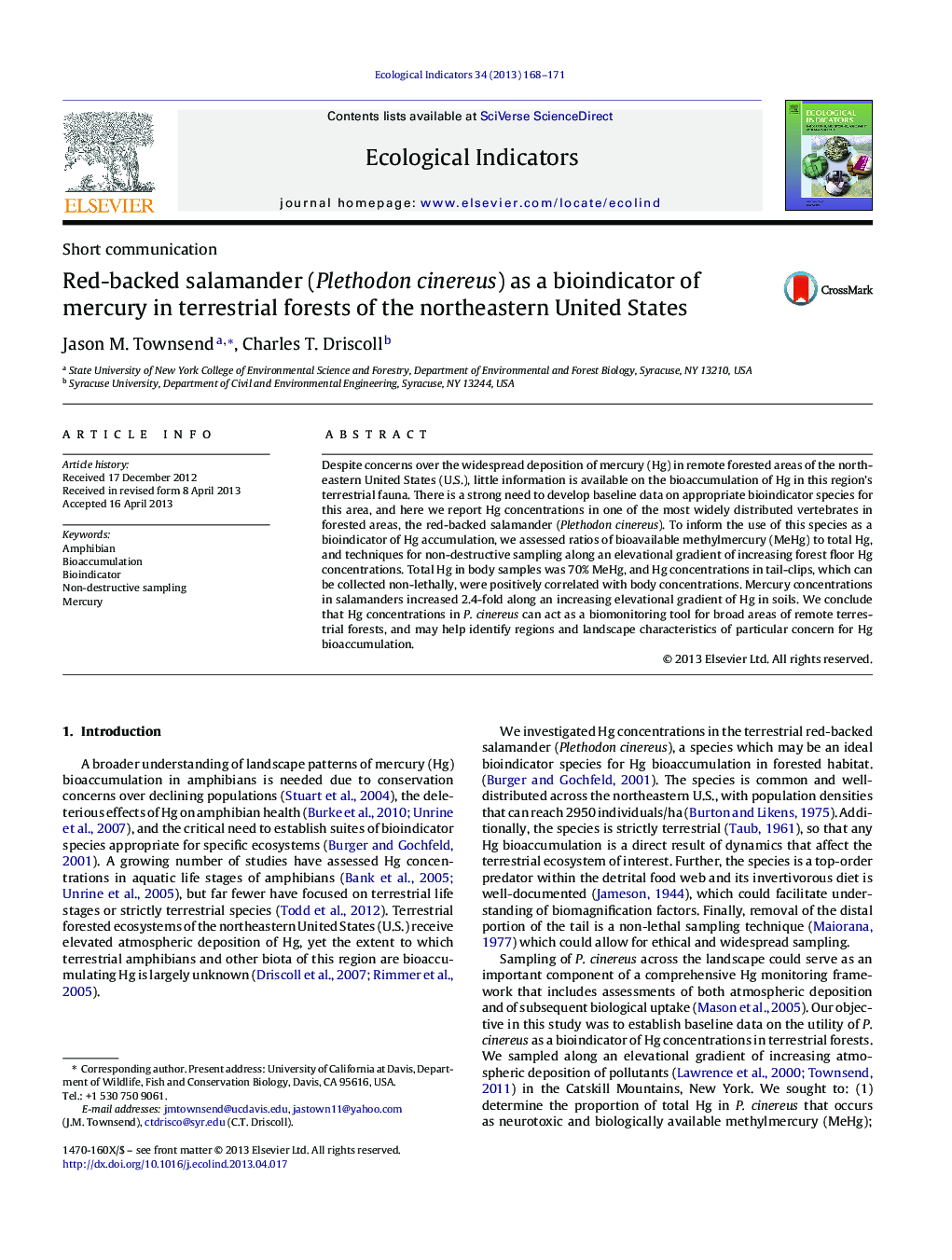| Article ID | Journal | Published Year | Pages | File Type |
|---|---|---|---|---|
| 6295246 | Ecological Indicators | 2013 | 4 Pages |
Abstract
Despite concerns over the widespread deposition of mercury (Hg) in remote forested areas of the northeastern United States (U.S.), little information is available on the bioaccumulation of Hg in this region's terrestrial fauna. There is a strong need to develop baseline data on appropriate bioindicator species for this area, and here we report Hg concentrations in one of the most widely distributed vertebrates in forested areas, the red-backed salamander (Plethodon cinereus). To inform the use of this species as a bioindicator of Hg accumulation, we assessed ratios of bioavailable methylmercury (MeHg) to total Hg, and techniques for non-destructive sampling along an elevational gradient of increasing forest floor Hg concentrations. Total Hg in body samples was 70% MeHg, and Hg concentrations in tail-clips, which can be collected non-lethally, were positively correlated with body concentrations. Mercury concentrations in salamanders increased 2.4-fold along an increasing elevational gradient of Hg in soils. We conclude that Hg concentrations in P. cinereus can act as a biomonitoring tool for broad areas of remote terrestrial forests, and may help identify regions and landscape characteristics of particular concern for Hg bioaccumulation.
Related Topics
Life Sciences
Agricultural and Biological Sciences
Ecology, Evolution, Behavior and Systematics
Authors
Jason M. Townsend, Charles T. Driscoll,
